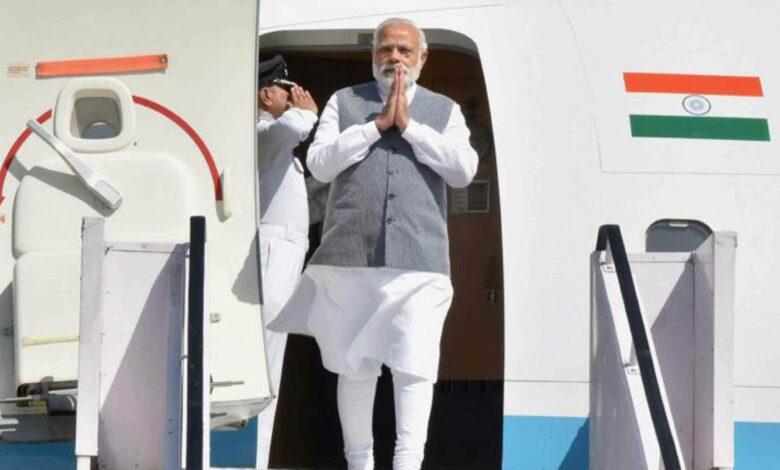PM Modi to visit Germany, UAE from June 26-28

Prime Minister Narendra Modi will visit the Alpine castle of Schloss Elmau in southern Germany on June 26 and 27 to attend the annual summit of G7 that is expected to delve into pressing global challenges including the Ukraine crisis and the situation in the Indo-Pacific.
From Germany, Modi will travel to the United Arab Emirates on June 28 to pay his condolences on the passing away of Sheikh Khalifa bin Zayed Al Nahyan, the former president of the Gulf nation.
Modi is attending the G7 summit following an invitation by German Chancellor Olaf Scholz.
Germany is the current chair of G7, a grouping of the world’s seven richest nations. It comprises the UK, Canada, France, Germany, Italy, Japan and the US.
“Prime Minister Narendra Modi will be visiting Schloss Elmau, Germany at the invitation of Chancellor of Germany, Olaf Scholz, for the G7 Summit under the German Presidency on June 26 to 27,” the Ministry of External Affairs (MEA) said in a statement.
Modi’s last visit to Germany was on May 2 when he travelled to the country to attend the meeting of the sixth edition of the India-Germany Inter-Governmental Consultations (IGC).
US President Joe Biden, British Prime Minister Boris Johnson, French President Emmanuel Macron and Canadian Prime Minister Justin Trudeau are among the top leaders attending the summit.
“During the summit, the Prime Minister is expected to speak in two sessions that include environment, energy, climate, food security, health, gender equality and democracy,” the MEA said.
In an effort to strengthen international collaboration on these important issues, other democracies such as Argentina, Indonesia, Senegal and South Africa have also been invited, the MEA said.
Modi will also hold bilateral meetings with leaders of some of the participating countries on the sidelines of the summit.
The MEA said the invitation to Modi to the G7 summit is in keeping with the tradition of strong and close partnership and high-level political contacts between India and Germany.
As chair of G7, Germany invited Modi and leaders of some other countries to the summit as guests.
“After attending the G7 Summit, the Prime Minister will be travelling to the United Arab Emirates on June 28 to pay his personal condolences on the passing away of Sheikh Khalifa bin Zayed Al Nahyan, the former UAE President and Abu Dhabi Ruler,” the MEA said.
It said the prime minister will also take the opportunity to congratulate Sheikh Mohamed bin Zayed Al Nahyan on his election as the new President of UAE and Ruler of Abu Dhabi.
Sheikh Khalifa Bin Zayed Al Nahyan, the President of the Gulf nation, passed away on May 13 after battling illness for the last several years.
In a gesture of goodwill, Vice President M Venkaiah Naidu visited the UAE to offer India’s condolences over the demise of the Sheikh.




